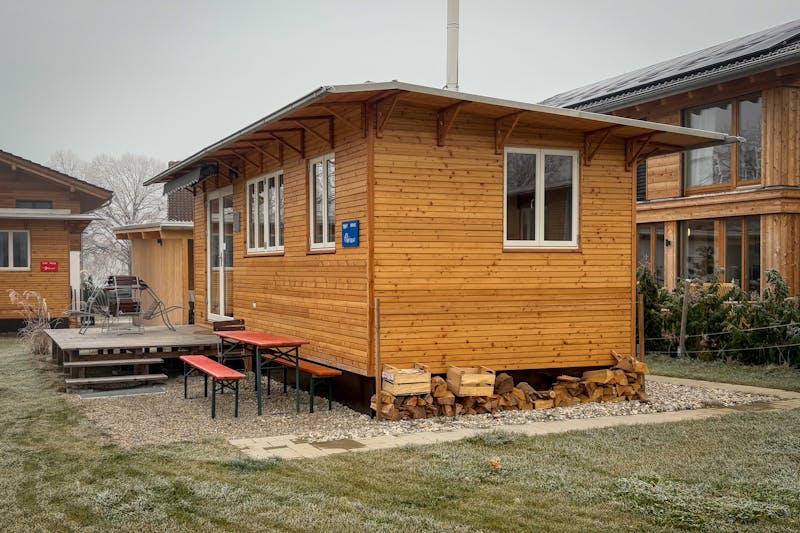The whispering waves of the ocean, the rustling leaves of a secluded forest, and now the subtle hum of the city; what do all these places have in common? They’re all settings for a rapidly growing trend encapsulated in a compact package – the tiny house movement. In Australia, this movement is steering towards a significant dimension- sustainability. But how can a tiny home contribute to ecological stability? Are they as green as they claim to be? And what does it take to be an eco-conscious tiny homes builders? This in-depth feature aims to unravel these intriguing quests, journeying you through the eco-conscious practices of Australian tiny house builders.
Understanding The Tiny and Eco-conscious Concept
Tiny homes aren’t just about downsizing your square footage; they’re a bundled package of lifestyle simplicity, eco-consciousness, and financial liberation. This trend aligns perfectly with Australia’s obsession with sustainability, making it a hot topic for the design industry and attracting a host of innovative builders to this petite architectural phenomenon. From refurbishing old shipping containers to innovative mobile pod suites, our Aussie builders are leveraging eco-friendly methodologies in every pinch of the tiny home building process.
Why Go Green with Tiny Homes?
The environmentally friendly approach of tiny homes is steeped in a philosophy of reduced carbon footprint. As society becomes more cognisant of the impacts of human actions on the Earth, many are looking for ways to live more sustainably. Tiny homes provide an answer to this wanderlust for ecological housing with their small size, lowered energy demand, and often clever integration of renewable energy and water recycling systems.
How Are Aussie Builders Bringing Eco-consciousness to Tiny Homes?
Environmental preservation underpins the ethos of many Australian tiny home builders. They incorporate this principle in various ways; designing homes that maximise natural light, use non-toxic building materials, offer efficient insulation, and more importantly, optimise off-grid systems. One noteworthy practice is the adherence to the principles of “Cradle to Cradle” design, a biomimetic approach to the design paradigm that views waste as an inevitable resource, ensuring that the materials used can return to the biosphere without causing ecological harm.
The Pros and Cons of Sustainable Tiny Homes
While tiny home living is praised for its contribution to environmental sustainability, it isn’t without its challenges. The pros include lessened environmental impact, freedom from debt, and the chance to live a minimalist lifestyle. However, tiny living isn’t for everyone. The cons encompass less space for personal belongings, the requirement for consistent organisation, and the complex process of land regulation and financing. It’s a lifestyle choice that rewards the eco-conscious, resourceful, and adaptable dwellers, willing to step outside their comfort zone and into a compact, sustainable nest.

Pioneering the Green with Notable Tiny Homes Builders
Eco-conscious practices are becoming the benchmark for many progressive builders, and some are truly reinventing the concept of sustainable tiny living. From Tiny Blox’s flat-pack designs that challenge the traditional building process to Häuslein Tiny House Co’s luxury mobile homes emphasising off-grid capability, Aussie tiny homes builders are trailblazing the path towards a sustainable future, one tiny home at a time.
From Dream to Reality: Building a Sustainable Tiny Home
As more Australians romanticise about shrinking their carbon footprint, sustainable tiny homes have leapt from dream to reality. But building one requires immense comprehension of laws, design principles, and green methodologies. An illustrative guide or a detailed consultation from a green builder is highly recommended for aspiring tiny homes builders.
Conclusion
As more individuals and families venture to redefine their lifestyles, Australian builders stand ready to shape sustainable revolutions, one tiny homes builders at a time. Sustainable tiny living isn’t just about embracing smaller spaces but about rethinking our relationship with the environment. Its birth and evolution clearly reflect a conscious step towards ecologically responsible living. It won’t be surprising to see this niche phenomenon snowball into a substantial mainstream movement altering the landscape of Australia’s future – a future built on the foundations of simplicity, sustainability, and significant change.
